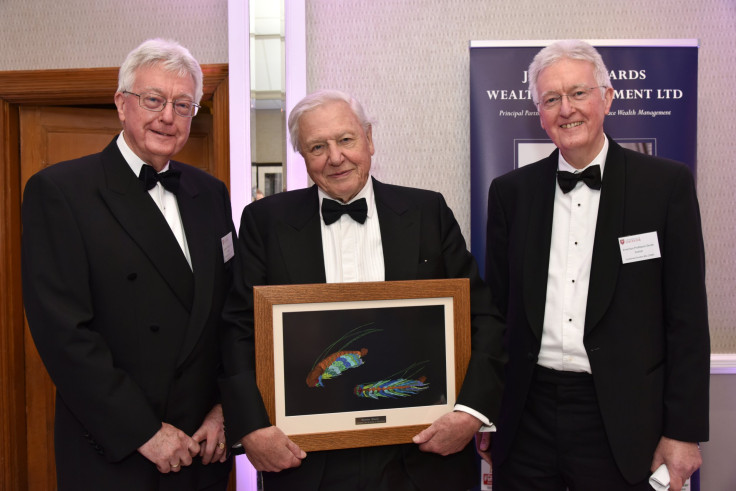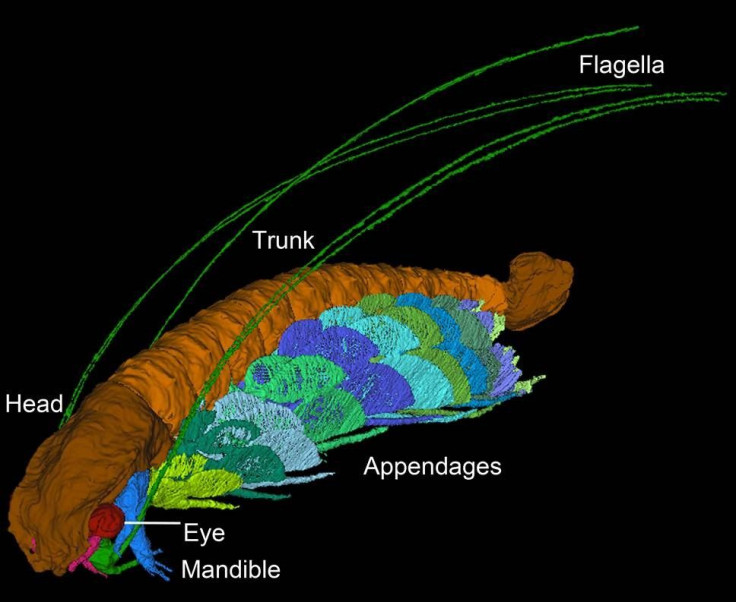David Attenborough Has Fossil From 430 Million Years Ago Named After Him

A group of scientists from four educational institutions in the United Kingdom and the United States, who co-authored a paper on a new fossil find, named the 430 million-year-old fossil in honor of David Attenborough. The fossil, found in the U.K., is of an ancient crustacean, previously unknown to science and a distant relative of present-day crabs, shrimps and lobsters.
Found in volcanic ash deposits, “The fossil is described as ‘exceptionally well preserved in three-dimensions’ — complete with the soft-parts of the animal, such as legs, eyes and very delicate antennae,” according to a statement by the University of Leicester, whose researchers were co-authors of a paper describing the fossil, published in the journal Proceedings of the Royal Society B.
Read: World’s Oldest Plant-Like Fossils Found In India
The fossil has been named Cascolus ravitis to honor Attenborough, “who grew up on University College Leicester campus (the forerunner of the University), in celebration of his 90th birthday. Cascolus is derived from castrum meaning ‘stronghold’ and colus, ‘dwelling in,’ alluding to the Old English source for the surname Attenborough; while ‘ravitis” is a combination of Ratae - the Roman name for Leicester - ‘vita’, life, and ‘commeatis’, a messenger,” the statement said.
The team that discovered the fossil includes researchers from Imperial College London, and universities of Oxford and Yale.

Speaking about the fossil, David Siveter from the University of Leicester said in the statement: “Such a well-preserved fossil is exciting, and this particular one is a unique example of its kind in the fossil record, and so we can establish it as a new species of a new genus. … Even though it is relatively small, at just nine millimeters long, it preserves incredible detail including body parts that are normally not fossilized. It provides scientists with important, novel insights into the evolution of the body plan, the limbs and possible respiratory-circulatory physiology of a primitive member of one of the major groups of Crustacea.”
In the Silurian period when C. ravitis lived, most of southern Britain, where the fossil was found, was in warm southern subtropical latitudes, and quite close to an ancient landmass that is now North America. Moreover, the land was covered by a shallow sea and the remains of animals living there were preserved by a rain of volcanic ash.
David Briggs from Yale, a co-author on the paper, said in a statement on the university’s website: “It is wonderful to be able to name a remarkable fossil from the United Kingdom in honor of Sir David, who has done so much to promote the conservation of the Earth’s biodiversity.”
Read: Human Skull Evolution Linked To Walking On Two Feet
Reacting to the announcement, Attenborough said: “The biggest compliment that a biologist or paleontologist can pay to another one is to name a fossil in his honor and I take this as a very great compliment.”
Attenborough has had a number of other objects, both living and inanimate, named after him previously. These include various species of plants and animals, a dinosaur and another fossil, as well as a research boat.
© Copyright IBTimes 2024. All rights reserved.











